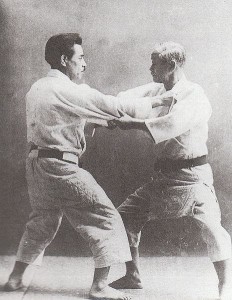What Does the Rank of Black Belt Mean?
I have spent a lot of time studying different rank systems. The rank system seems to be a modern concept started by Dr. Jigaro Kano, an educator, who wanted a system of grading to separate students.
Over the next century, numerous styles adopted the belt rank system but the only commonality was the belt systems meant what the creator decided it meant. The meaning also evolved through the years as more teachers began to spread the art and award belts.
Prior to Dr. Kano, a head instructor, commonly called a master, issued students he felt were qualified to teach the art a certificate of professorship. The new professor would then find his own students to teach.
Dr. Kano was a member of the Japanese Olympic Committee and observed that swimmers wore a sash to denote skill level. It is said he adopted the rank system based on this observation although I have my doubts.
Supposedly, the most skilled swimmer wore a black sash but as most of these stories go, it is difficult to sort fact from fiction. Dr. Kano was on the Olympic committee later in life, while early pictures of Kodokan training seems to indicate they were using colored belts to denote rank prior to Dr. Kano joining the Olympic Committee. Dr. Kano used two types of rank: ungraded ranks (below black belt) and graded ranks(black belt). Most of the other Japanese martial arts soon followed suit.
In Brazil, the Gracies, who learned a more ground focused form of Judo from Mitsuyo Maeda, an early member of the Kodokan. The Gracies developed a different system of belts. Their original system had three belts. All students, no matter how good, were white belts unless they were instructors in training. Instructors in training wore light blue belts and instructors wore dark blue belts. Or it is what we are often told. However, Gracie Academy pictures prior to 1967 seem to show many of the instructors wearing black belts. Whether it was dark blue or black, students couldn’t achieve the top BJJ ranks unless they were teachers.

New Academy Logo
Later, Helio Gracie would change the belt system to allow people to get black belt without being instructors but he used different black belts to differentiate between an instructor and a non-instructor. Today, most Brazilian Jiu-Jitsu promotions are based on skill and often competitive record as opposed to ability to teach. Professor Pedro Valente discusses the original system in this excellent video.
Karate and Taekwondo also adapted the belt system. Generally, you can learn striking arts more quickly than grappling arts. Karate and TKD promotions came more quickly. It is still not unheard of for students training every day in Japan and Korea to earn a black belt in a year. In America, it is pretty unheard of to earn a black belt in less than 4 years.
American martial artists influenced the belt system in a couple of significant ways. First, the original belt systems only had a few colored or below black belts. However, many American did not have the patience to wait at a belt rank for a couple of years, so the early martial arts instructors added extra belts, so the students would stay interested in their next promotion.
Second, Americans elevated the black belt to where most people think it is an expert rank. In most systems, you are not considered a full instructor until you reach 4th Degree Black Belt but the black belt has become the symbol of perseverance and achievement within your school.
In short, the meaning of a black belt is relative to your school and curriculum.


